Key takeaways:
- The vinyl revival is driven by a desire for authenticity and a tangible music experience in a digital age.
- Vinyl records foster community and individual expression, allowing collectors to curate their unique musical identities.
- Genres like rock, jazz, and lo-fi hip-hop leverage the warmth of vinyl, enhancing emotional connections to the music.
- The future of vinyl is promising, with increasing sales among younger generations and potential for innovative artist releases.
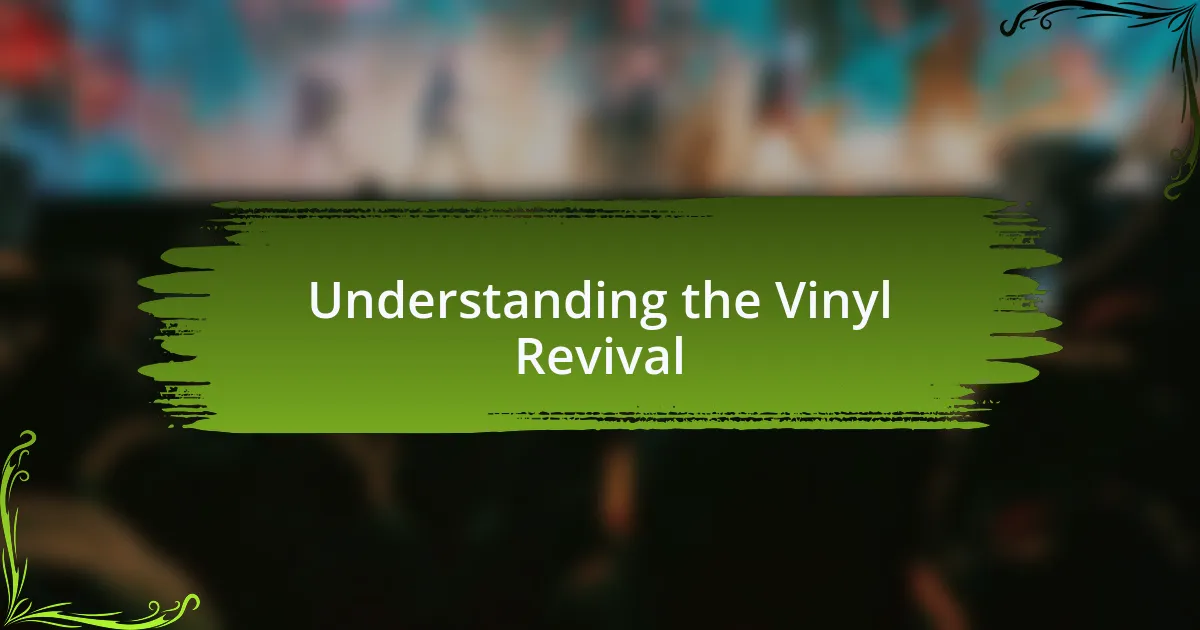
Understanding the Vinyl Revival
The vinyl revival is fascinating, isn’t it? It’s not simply about the resurgence of an old format; it taps into our desire for authenticity in a digital age. I remember unearthing my dad’s old record collection and feeling an electric thrill at the prospect of listening to music through those large, tangible discs. There’s something about loading a record onto the turntable, surrounded by anticipation, that a click of a button on a streaming service just can’t match.
As I talk to friends and fellow music lovers, many share a palpable excitement about vinyl. It’s more than just sound; it’s an experience. The act of flipping through vinyl crates, discovering long-lost albums, and cherishing album artwork brings back a tangible connection to music that often feels absent in our fast-paced, digital world. Doesn’t the ritual of selecting a record, carefully placing it on the turntable, and putting the needle down create a unique bond with the music?
Moreover, let’s not ignore the emotional weight of this revival. For many, vinyl represents nostalgia and a link to past generations. I often think about how music serves as a soundtrack for our lives. When I play old records, it feels like I’m connecting with my younger self and reliving cherished memories. So, why do you think we gravitate toward vinyl? Perhaps it’s the way it stretches our appreciation for sound while reminding us of the power of tangible experiences in our modern lives.

The Impact of Vinyl Records
The impact of vinyl records extends far beyond mere sound quality. In my experience, the warmth and richness of analog sound create an auditory experience that digital formats often fail to replicate. Picture this: sitting in a cozy corner of my living room, the gentle crackle as the needle touches the vinyl transforms the atmosphere, enriching the mood in a way that a streaming playlist never could.
Moreover, I’ve noticed how vinyl fosters community. When I visit record stores, it’s not just shopping; it’s about conversations. I’ve shared excited exchanges with strangers over album finds, like the time I stumbled upon a rare press of my favorite band. These moments remind me of the shared love for music that can be hard to find in the online world. Doesn’t it bring to mind the joy of discovering music together, rather than just scrolling through endless lists?
Let’s also consider how vinyl has become a symbol of individuality. I often feel a sense of pride curating my collection, each record telling a different story about my tastes and experiences. In a world dominated by algorithms, owning a unique vinyl collection allows me to express my identity more personally. Isn’t it exhilarating to know that, in a way, every record I choose represents a piece of my journey through the vast landscape of music?
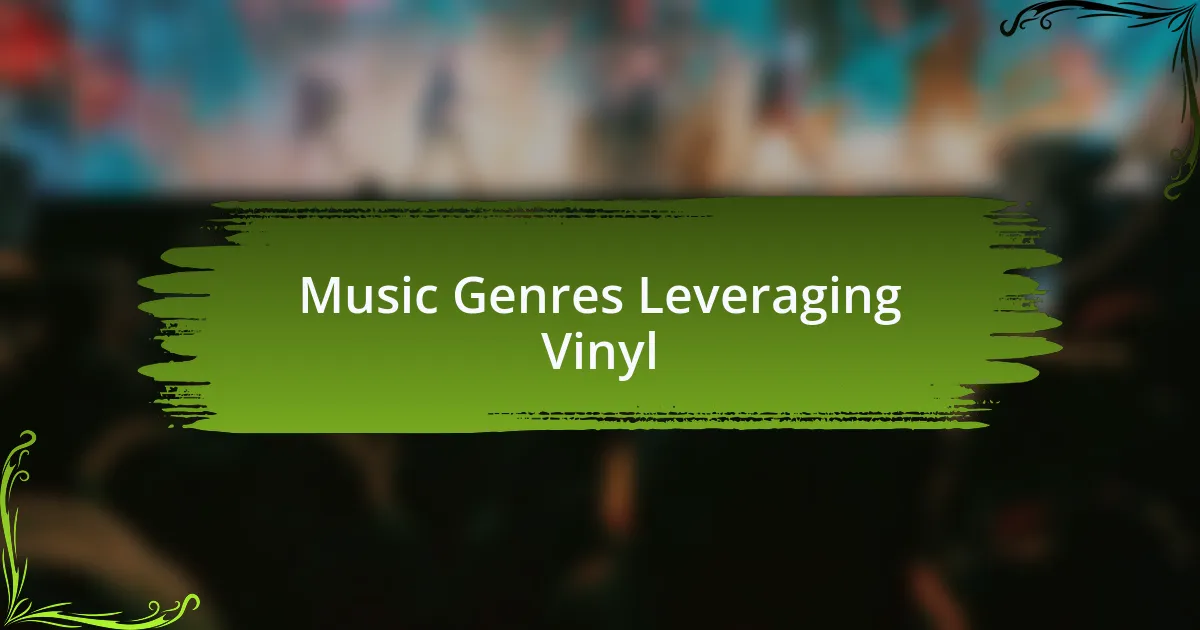
Music Genres Leveraging Vinyl
Exploring the various music genres leveraging vinyl, I find that rock and jazz are particularly noteworthy. It’s incredible how iconic rock albums, from Led Zeppelin to The Rolling Stones, undeniably gain an extra layer of depth on vinyl. I remember playing one of my favorite rock records, feeling the richness of guitar riffs resonate throughout the room, creating an immersive experience that really connects me to the artist’s vision.
Jazz, on the other hand, seems perfectly tailored to the vinyl format. Listening to Miles Davis’s “Kind of Blue” while sipping my coffee transports me to a smoke-filled club in the 1950s. The warmth of the record captures every nuanced note, pushing the boundaries between the musician and me. Isn’t it fascinating how vinyl allows us to feel the pulse of a live performance right in our own living spaces?
Emerging genres like lo-fi hip-hop have also tapped into vinyl’s nostalgic allure. In my experience, the crackle of a vinyl record complements the ambient beats beautifully, creating a laid-back vibe that’s hard to replicate digitally. When I spin these records during a rainy afternoon, it feels like the music is truly enveloping me, much like a comforting embrace. What better way to enhance that cozy feeling than by choosing vinyl as the medium?
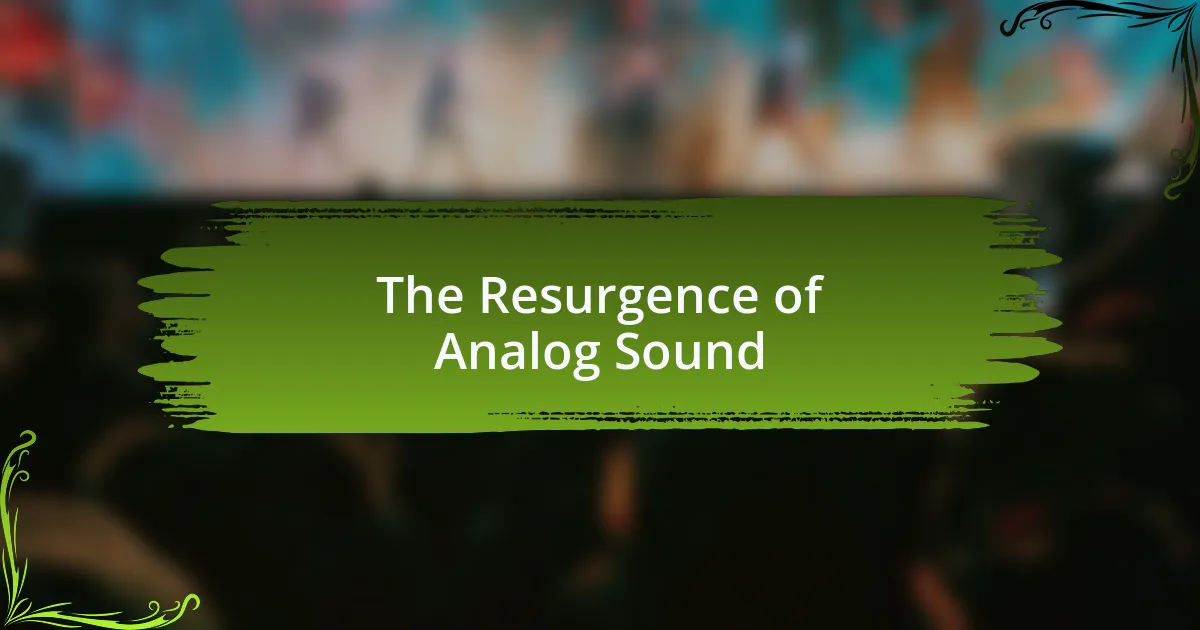
The Resurgence of Analog Sound
The allure of analog sound has grown significantly, largely driven by a longing for authenticity in music. When I hear the warm, rich tones of a vinyl record, it feels like stepping into a past era, where music was a tactile experience. One evening, while hosting friends, we gathered around a turntable, and the moment that needle dropped, everyone paused. That shared experience, the discussion about the artist, the album cover, and the sound quality, felt so real and alive—an emotional connection I often miss with digital formats.
Listening to vinyl offers a stark contrast to the sterile clarity of digital music. Recently, I rediscovered an old jazz album from my father’s collection. The way the saxophone breathed and danced through the grooves was simply captivating. It made me reminisce about family gatherings, where we would share stories and laughter as the record spun in the background, immersing us in the moment. Don’t you think this kind of engagement is something lost in the age of streaming?
Moreover, the tactile nature of handling vinyl pushes us to appreciate music in a new light. Each record feels like a commitment. When I set aside time to flip through my collection, the anticipation builds with each choice. This physical act grounds the listening experience, transforming it from a passive event to an active ritual. Isn’t it remarkable how analog sound encourages us to invest more of ourselves into what we listen to?
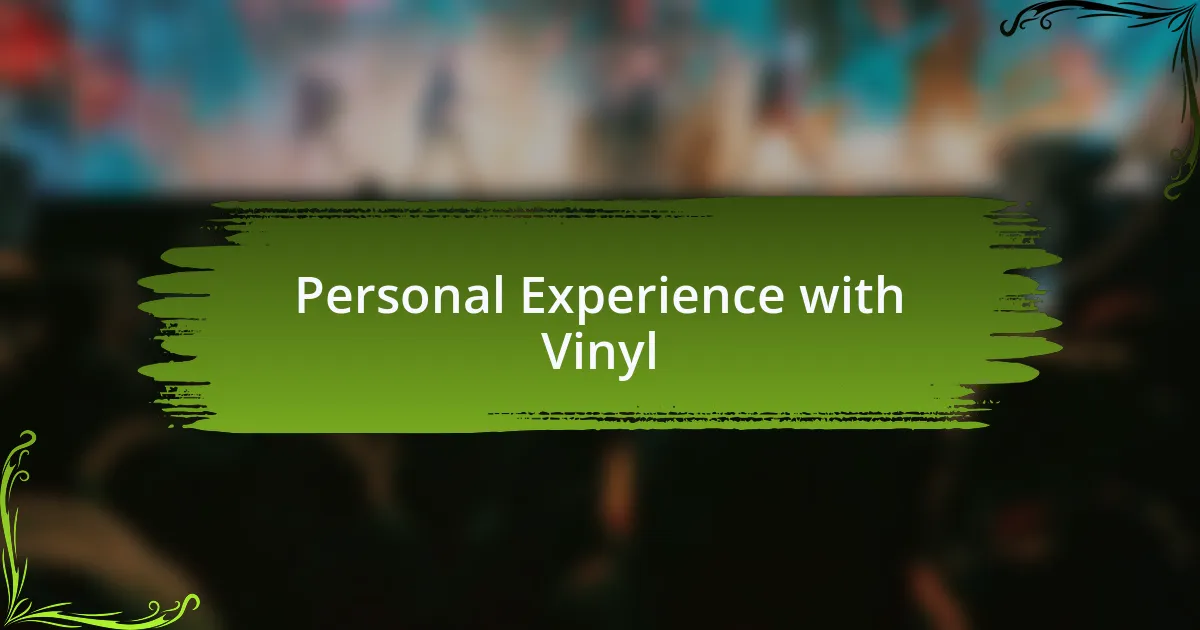
Personal Experience with Vinyl
Exploring vinyl has been a journey of discovery for me. I’ll never forget the thrill of visiting a local record shop, flipping through stacks of albums. One day, I stumbled upon an obscure band from the 70s, their cover art striking and colorful. I took a chance, and when I got home, placing that record on the turntable felt like unearthing a hidden treasure. The excitement of hearing those unexpected melodies was something special. Have you ever experienced that rush of finding music that resonates deeply with you?
There’s also something uniquely satisfying about the ritual of maintenance. I remember the first time I cleaned my record with a brush—there was an undeniable sense of care that accompanied it. As I cleaned each groove, I felt like I was engaging in a form of respect for the music, ensuring the best sound possible. This mindful practice transformed my listening experience, making it feel personal and deliberate. How often do we take that time with our current playlists?
Sharing the vinyl experience with loved ones amplifies its magic. I recall hosting a small gathering where everyone brought their favorite records. As we played each one, stories unfolded—about the songs, the memories associated with them, and the emotions they stirred. It became less about the music itself and more about the connections we forged in that moment. Isn’t it powerful how music can weave a tapestry of shared experiences together?
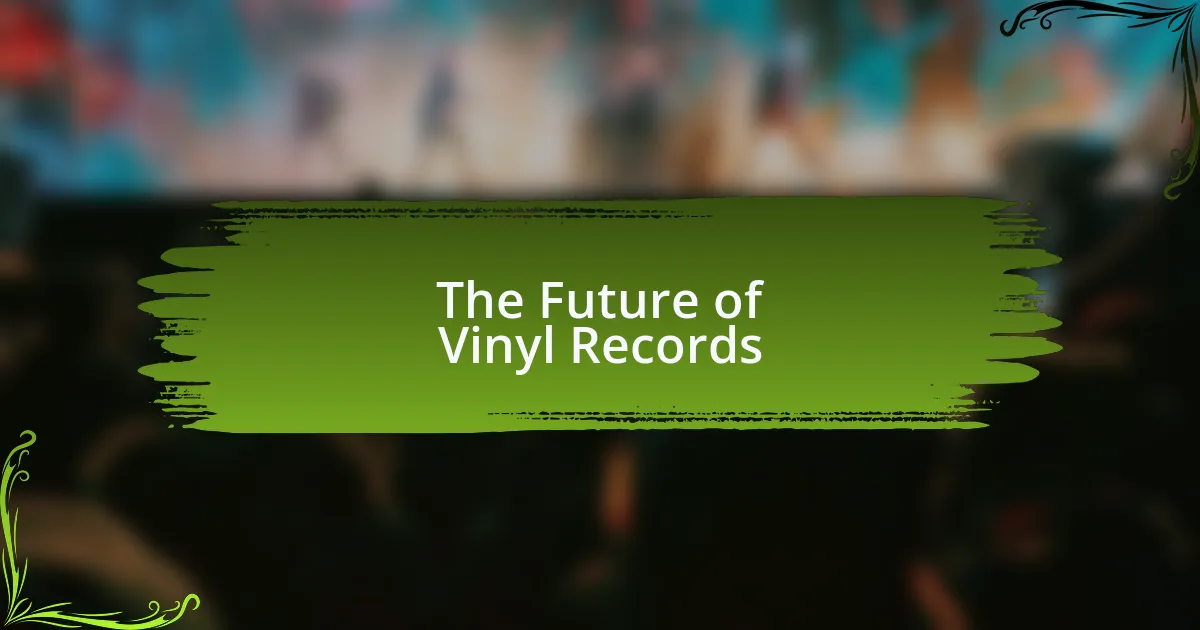
The Future of Vinyl Records
The future of vinyl records appears bright, with sales continuing to surge as younger generations embrace the format. I vividly recall a conversation I had with a college student who claimed that handling records felt like a statement about slowing down in our fast-paced digital world. Isn’t it intriguing how something so analog and tactile can resonate with a generation that has grown up surrounded by technology?
As pressing plants expand and more artists opt for vinyl releases, we’re likely to see a diversification of genres and styles. I remember being pleasantly surprised at a local fair when I discovered a limited-edition pressing of a contemporary indie band’s latest album. It made me realize that vinyl is not just about nostalgia; it’s also a vibrant canvas for current music. What if this revival continues to inspire artists to experiment with visuals and sound in ways digital formats simply cannot?
However, challenges remain in maintaining this momentum as the manufacturing process can be complex and time-consuming. There was a period when I had to wait months for a special release I ordered, leaving me wondering if the excitement would last. But each time I hold my vinyl collection, I’m reminded that this format encourages patience—and perhaps that’s exactly what both music and listeners need in the future. Wouldn’t it be fascinating to see how this relationship evolves?